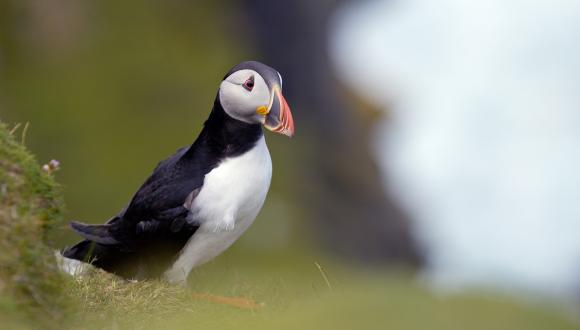
Hermaness National Nature Reserve

Avian Flu Alert
Avian influenza is present in the area - please help us reduce the spread of this disease:
Follow marked routes and remain on paths.
Do not to touch any sick or dead birds, their droppings, or any water nearby. Keep your dog on a lead to avoid the possibility of contact with any dead bird.
If you are visiting multiple sites, please clean footwear and clothing between sites to reduce the risk of spread.
Please report dead wild waterfowl (swans, geese, or ducks) gulls, birds of prey, or other wild birds to Defra.
Hermaness Hill Path and Welcome Area is now open.
This was a partnership project between NatureScot, Shetland Islands Council and VisitScotland to enhance the visitor experience at Hermaness NNR. New recycled plastic boardwalk has been installed to retrace the historic path to Muckle Flugga signalling station on Hermaness Hill, and create a circular route around the reserve. It protects the fragile peatland from erosion, and is routed to avoid disturbance to sensitive nesting birds. An interpretation shelter and toilets have been built in the car park, and new signs installed. Old sections of boardwalk have been upgraded, and ditch crossings installed on the cliff path.
The project was funded by the Natural and Cultural Heritage Fund, the Rural Tourism Infrastructure Fund, and NatureScot.

A feast for the senses
Overlooking Muckle Flugga – Britain’s most northerly point – Hermaness National Nature Reserve (NNR) is a dramatic cliff-top haven for thousands of seabirds. Birds that breed here include fulmars, gulls, shags, gannets, puffins and kittiwakes.
During the summer months, the moorland becomes a carpet of colour. You’ll find heather, crowberry, bog bilberry and mosses on the moor. In the coastal grasslands spring squill comes into bloom followed by the arrival of flowering sea pinks (thrift).
Great skuas – or ‘bonxies’ as they are known locally – soar overhead. Although most of the seabirds are gone by autumn, gannets are still around, and grey seals are often seen reclining on the rocky shore.
Whether you come to watch the birds or simply to enjoy the sensation of being at the edge of the world, you’ll find a stunning landscape. It’s an hour’s walk each way across moorland to reach the seabird cliffs. Allow 3 to 4 hours to explore the whole reserve.
Find out more about visiting Hermaness NNR.
Top attractions
- Watch gannets dive spectacularly into the sea.
- Follow the trail to find breathtaking cliff-top views.
- See puffins coming in to land before diving into their nest burrows.
Find out more about the reserve and its natural history.
Contact
Reserve manager: Juan Brown
NatureScot
Ground Floor
Stewart Building
Lerwick
Shetland
ZE01 0LL
Telephone: 01463 667600
Email: [email protected]
Further information
Follow our NNR Facebook page for up-to-date information on reserves across Scotland.
Follow NatureScot’s Scotland’s Nature blog and find interesting articles on Scotland’s natural heritage.
Hermaness NNR is a member of VisitScotland.
Enjoyed your visit?
- Make a donation to support nature and visitor facilities on our NNRs.
- Let us know what you thought on TripAdvisor.
Discover more about why Scotland’s National Nature Reserves were created and the partners who manage them.
Find out more on
- Visiting the reserve
- Visiting the reserve leaflet
- About the reserve
- Visit more of our nature reserves
Related Links
- Designation and management of Scotland’s National Nature Reserves
- Learn more about other protected areas





